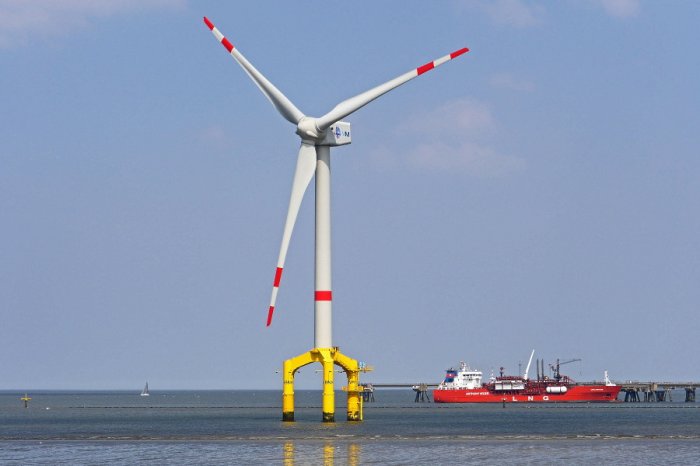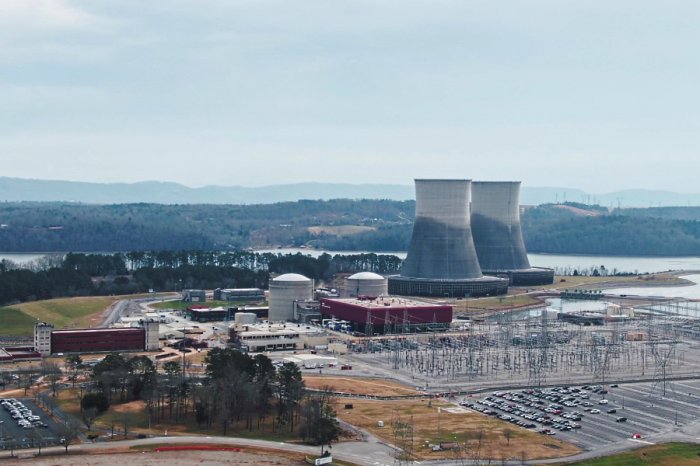After receiving the necessary documents and project presentation, our team will try to review your request as soon as possible, and leading experts will offer the best options for project funding.
This is a huge amount of money, which in the vast majority of cases requires businesses to use borrowed capital, including long-term investment loans.
If you are looking for funding sources for the construction of shopping centers in the USA, Great Britain, Germany, France, Spain, Italy, Poland, Canada, Brazil, Saudi Arabia, China, India, Japan or other developed countries, please contact our team.
We are ready to offer and develop a customized investment solution for your project, including long-term project finance schemes.
Basics of investing in shopping centers
Shopping malls are business models where a wide variety of retailers converge, with department stores, supermarkets and specialty stores participating as anchor tenants being the most prominent.In recent years, these properties have generally become the preferred destinations for multi-brand global retail chains and franchised units.
Compared to other relatively dispersed forms of retail, the shopping mall is designed as an integrated facility that enjoys multiple incentives and benefits from the proximity of many services. By offering complementary products, services and conveniences in one place, business can conquer markets with greater opportunities and patterns of integrated and continuous consumption flows.
Inspired by European department stores and galleries of the 19th century, modern shopping centers are recognized as an American invention dating back to the mid-20th century.
The first indoor shopping center appeared in 1956 in Minnesota (USA).
Since then, for more than half a century, this model has been positioned with varying speed and intensity in a large number of metropolitan areas and large cities around the world. The global proliferation of malls in recent decades has allowed for the structuring of more rational and hedonistic consumption in today's urban society.
In general, commercial investment projects can be classified into Regional Malls, Lifestyle Centers, Fashion Malls, Community Centers, Outlets, mixed-use facilities and other types.
This typology shows that the mall is not a unique phenomenon, but a modality that has reinvented itself over several decades through marketing innovations and the re-adaptation of architecture, scale and design in line with the emergence of new market niches in urban areas.
For example, while shopping malls originally emerged as a system for distributing basic goods and services, the current generation of shopping malls are designed as places highly oriented towards leisure and entertainment consumption, offering options such as cinemas, playgrounds and video games, in some cases they host ice rinks, theme parks, exhibition spaces, forums for cultural and artistic events, and gambling and nightlife establishments, among others.
Shopping malls as an attractive investment
The construction of shopping centers involves a complex process that goes from acquiring large land plots to designing and managing large equipment and coordinating numerous companies and users, so it is a segment in which only companies with sufficient capital, high organizational and logistical capabilities participate.In this process, the following actors play complementary roles:
• Developers, which include firms involved in engineering, construction and promotion.
• Investment companies that provide capital for the acquisition of land and construction.
• Retailers of all types offering goods and services.
Investing in commercial real estate is the acquisition of a specific real estate object or residential investment instruments for the purpose of making a profit.
In countries with a developed market economy, real estate is a stable, profitable asset. Owning a mall can be a lucrative business idea. The profitability of such investment projects usually varies between 4% and 25%, being highly dependent on project costs, facility parameters, including location, market, lease terms and rental rates. Many properties grow in value over time, providing the owner with a steady capital gain.
Shopping centers are very attractive for numerous businesses, because the potential income from investments with effective management generally exceeds interest from securities or deposits.
On the other hand, the transparency of such an investment makes it possible to assess risks and calculate future profitability, and the relative stability of the retail sales market, especially in developed markets, gives confidence in the preservation of capital.
Companies can invest in shopping centers in various ways, either by purchasing real estate or rights to it for the purpose of its development, or by purchasing buildings and structures for their further operation and income generation. In the field of commercial real estate, the subjects of investment activity are all participants in investment projects, starting with investors, developers, contractors, ending with users, suppliers, insurance companies, banks or financial intermediaries.
In order to implement an investment project in the commercial real estate sector, it is necessary to develop technical and financial documentation, conduct engineering studies, develop an order for the construction of buildings and structures, conclude contracts for the relevant works, and so on.
When implementing an investment project, engineering companies, operators and other institutions that provide services in engineering research, design, construction and management of a shopping center can act as project executors.
A large group of subjects of investment activities in the field of commercial real estate are so-called institutional investors, which include insurance / investment companies, banks, mutual investment funds, pension funds, etc.
The essence of the activities of these institutes is to attract free funds of the population and business entities and direct them to investment purposes.
Regarding commercial real estate, experts distinguish between real investments, financial investments, and investments in intangible assets. Real investments prevail in developing countries, and in countries with developed market economies, financial investments play a major role. The latter relate to acquisition, formation of a portfolio of securities and their sale, purchase and sale of financial obligations, issue and sale of securities. Financial investments can be divided into direct investments (shares, bonds, promissory notes) and indirect investments.
Financial investments in securities secured by real estate or mortgage (collateral) are indirect investments.
Financing commercial real estate
There are various tools and technologies for investing in commercial real estate.The most common are the reinvestment of the company's internal resources, loans, leasing, bond issuance, attraction of mutual mutual investment funds.
The business is constantly looking for new ways and forms of financing projects in this field. One of the main functions in the real estate investment system is the financing function, which means the transfer of funds from capital sources to investors. Investment in real estate is the process of providing and using funds for investment in real estate.

Considering the high cost of modern shopping center projects, an important feature of investing in commercial real estate is a high share of borrowed funds.
Financing using internal financial resources is rare in this area. Financing the construction of shopping centers through loan capital is more related to specific forms of financing (long-term investment loans), which require specific financial engineering solutions, collateral and insurance. Such solutions may have a complex structure consisting of several loans of different levels.
The leverage effect applies not only to companies, but also to all capital-intensive projects they carry out, including investments in shopping centers. Any decisions related to the structure of real estate investments should be made in such a way as to ensure the lowest weighted average cost of capital.
Under such circumstances, the return on equity capital should be maximal, and the share of loan capital should be optimal within these limits, which will not increase the risk for the parties.
A bank loan is the most common form of debt financing for large commercial real estate projects. Getting a loan to build or purchase a shopping center is realistic if the future investor provides a collateral in the form of other real estate and demonstrates stable cash flows. It is also necessary to take into account the fact that banks are reluctant to finance the purchase of commercial premises by individuals, but this is also possible.
Companies with short operating histories and those with past dues and taxes in the past are least likely to get a loan.
In addition to standard documents, the bank usually requires a potential borrower to submit a business plan. The bank's specialists will assess the potential of the premises and the return on investment and, on this basis, decide how much financing is appropriate to provide for a particular project.
The loan usually covers up to 80% of the value of the property with financing terms varying from 3 years to 15 years or even more.
Most banks treat commercial real estate loan applications on a case-by-case basis, so terms, interest rates, and debt repayment schedules can vary.
Global investments in shopping centers: numbers and trends
In 2021, the total global shopping center market exceeded US$5200 billion with a projected CAGR of 6% annually over the next five years.International experts believe that by 2028 the turnover of shopping centers can reach US$8,000 billion. Shopping malls are reclaiming their role in retail amid the gradual easing or lifting of pandemic restrictions, which is a positive signal for investors. Supply chains are also recovering, which, together with the resumption of tourism and shopping tours, has become a powerful driver of market growth in the last year.
Global investments in shopping centers are concentrated mainly in the following regions:
• North America: United States and Canada.
• Europe: UK, Germany, France, Spain and other countries.
• South and East Asia: China, India, Japan, Indonesia, Thailand.
• Middle East: United Arab Emirates and other Gulf countries
• South America: Brazil, Argentina and others.
North America dominated the shopping center market in 2022, with figures approaching half of all global sales.
The region also accounts for a significant proportion of new investment in this type of commercial property, although East Asia is showing stronger growth.
The key players in this market are such world famous companies as Walmart, Schwarz Group (Lidl and Kaufland), Walgreens, Costco Wholesale and a number of other large players. The concept of a modern shopping center is based on providing a wide range of goods and services under one roof, so retail giants combine food, household appliances, clothing, furniture, pharmaceutical products, as well as catering and entertainment of all kinds.
E-commerce, although it has caused some damage to traditional shopping malls, is now being successfully integrated into the new concept.
Surveys in the European Union show that most businessmen today are aware of the obsolescence of the current concept of shopping centers. In particular, the organizational concept and technological approach to investment projects of this type are partially outdated and do not meet the requirements of the modern retail market.
Retail parks and stores remain the most popular asset class, as investors do not see the need for drastic changes in the future. For example, 70% German business owners see a serious need for the optimization / modernization of commercial real estate.
The largest shopping malls in the world 2023
The list of the largest shopping centers demonstrates that a modern retail facility can be a truly large-scale and capital-intensive facility that requires significant investment.The largest facilities of this type located in investment-attractive countries are listed below. Sanctioned countries are not included in this list for the reason that they do not have investment value for foreign businesses.
IOI City Mall
The huge shopping center with a total area of over 800 thousand square meters ranks first in Southeast Asia in terms of area available for rent.The facility houses approximately 650 stores, including world-famous brands. The floor area is 230 thousand square meters. The facility is located in IOI Resort City (Malaysia). IOI City Mall can serve 1.8 million shoppers, providing world-class services to local population and overseas visitors. The investment project was completed in 2014, but numerous upgrades continue to this day.
The total investment cost was RM1.5 billion, which equated to approximately US$450 million at the time of construction.
South China Mall
The largest and most expensive shopping center in China, located in Dongguan.The total area of the facility exceeds 650,000 square meters, and the total cost is about $1.3 billion.
The useful area of this shopping center is sufficient to accommodate 2000+ stores. This is a private investment project led by Chinese business. The center is famous for its unique architecture, being divided into several thematic zones (Egypt, Venice, Paris, California and others). After the opening of South China Mall in 2005, a significant part of the retail space remained vacant for many years, which can be explained by the low purchasing power of the local population.
SM Mall of Asia
SM MoA is located in Pasay (Philippines).This is an expensive investment project that was started in 1996 with the aim of building the largest shopping center in the world, but this status was quickly lost shortly after opening in 2006.
The total area of the shopping center reaches 590 thousand square meters, which houses more than 660 stores, including shopping malls. points of leading international brands. Every day SM MoA welcomes hundreds of thousands of visitors, including thousands of foreign tourists from all over the world.

SM Tianjin
Another large shopping center in China, located in Tianjin and part of the Philippine chain of shopping malls SM Supermalls.The grandiose facility with a total area of more than 560 thousand square meters was put into operation in 2006. Benefiting from the free trade zone and proximity to the international airport, this commercial property is thriving. Today, SM Tianjin has more than 1,000 stores of various types, as well as a number of attractions, social facilities, etc.
Golden Resource Mall
Golden Resources Mall (Jin Yuan) with a total area of over 550,000 square meters is located in Beijing.The facility was opened in 2004 in an urbanized area of the Chinese capital with an eye on the growing middle class. The mall attracts more than a hundred thousand daily visitors who use the local shops, skating rink, gym, cinema and other entertainment.
Central West Gate
One of the largest retail investment projects in Southeast Asia, Central WestGate was opened in 2015.This 550,000 square meter shopping center is owned by Central Pattana Public Company Limited, Thailand's leading commercial real estate developer. The facility is located in Nonthaburi, a densely populated area with many tourists. It currently houses over 600 stores as well as numerous entertainment facilities.
CentralWorld
A large shopping center in Bangkok (Thailand), which was opened in 1990 and became one of the very first large facilities of this type in Southeast Asia.Over the past decades, CentralWorld has expanded significantly, and today the 500,000 square meter shopping center has become part of a huge complex with a total area of more than a million square meters. There are about 600 stores here, including the region's largest stores of Apple, H&M and other brands.
In addition, this complex includes a 5-star hotel, a gym, an ice rink and a multi-screen cinema.
Afterword
Investing in shopping malls has numerous benefits, but lack of knowledge ans experience in this area can make financial decisions difficult.Any type of property, whether residential, industrial or commercial, can be an excellent investment opportunity. In general, large commercial facilities offer higher returns, but risks and potential losses can also be higher.
If you need professional advice, please contact our experts.
GCAM Investment Group provides long-term loans for the construction of commercial real estate, arranges project finance schemes, and also offers financial engineering and financial modeling services for large projects around the world.


























